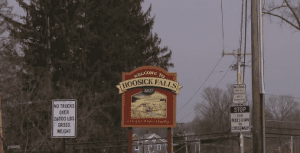
Extended Statute of Limitations In Response To Water Contaminants. On July 21, 2016, New York Governor Andrew Cuomo signed into law legislation that extends the time allowed for New Yorkers exposed to contaminants from Superfund sites to file personal injury claims against those responsible for the pollution. The bill was passed in response to […]

Extended Statute of Limitations In Response To Water Contaminants. On July 21, 2016, New York Governor Andrew Cuomo signed into law legislation that extends the time allowed for New Yorkers exposed to contaminants from Superfund sites to file personal injury claims against those responsible for the pollution.
The bill was passed in response to the water contamination in the towns of Hoosick Falls and Petersburgh, New York. Residents in both communities had only recently begun to learn about the health impacts of the contaminated water, including rare cancers, LongIsland.com reports. The statute of limitations in the existing law would not have allowed those who have been sick for more than five years to file suit. The newly signed law resets the limits for residents in any area designated a Superfund site by either the federal Environmental Protection Agency (EPA) or the New York State Department of Environmental Conservation (DEC).
The law helps to address contamination from the Saint-Gobain Performance Plastics plant in Hoosick Falls, which the Cuomo administration declared a state Superfund site earlier this year. On November 25, 2015, the EPA recommended that, based on the presence of perfluorooctanoic acid (PFOA) above 400 ppt in the Village of Hoosick Falls public drinking water supply, people should not drink the water from the Hoosick Falls public water supply or use it for cooking.
PFOA is a manmade chemical that is toxic and persists in the environment. PFOA is used in products including fire-fighting foams, coating additives, and cleaning products, according to the EPA.
This bill establishes a new civil practice law-CPLR 214-f -that resets the statute of limitations when a site is declared a Superfund site or based on the existing date-of-discovery rule in existing CPLR 214-c, whichever is later.
CPLR 214-c is the original Toxic Tort Law. It allows legal action to be started within three years of the date on which the injury was discovered or reasonably should have been discovered, or within one year after the cause of the injury was discovered or reasonably should have been discovered if that occurs less than five years after discovery of the injury, the New York State Trial Lawyers Association (NYSTLA) reports.
NYSTLA says this bill is important because people exposed to toxic substances “may not know at the time of the exposure that harm is occurring, may not discover the injury until it reveals itself in an illness such as cancer, and may not realize the cause of the injury until the hazard is publicly identified when an area is declared a Superfund site.” Because Superfund designation would be put a company at risk of lawsuits, the new law may create an incentive for parties to clean up contaminated sites to avoid Superfund listing.
The EPA said it would continue to collect samples in spring 2016, including soil samples in areas near the Saint-Gobain McCaffrey Street facility, and samples of soil, groundwater and storm drains at the McCaffrey Street facility. Assembly member John McDonald and state senator Kathy Marchione shepherded the legislation to passage.
The personal injury attorneys at Parker Waichman LLP offer free, no-obligation case evaluations. For more information, fill out our online contact form or call 1-800-YOURLAWYER (1-800-968-7529).


